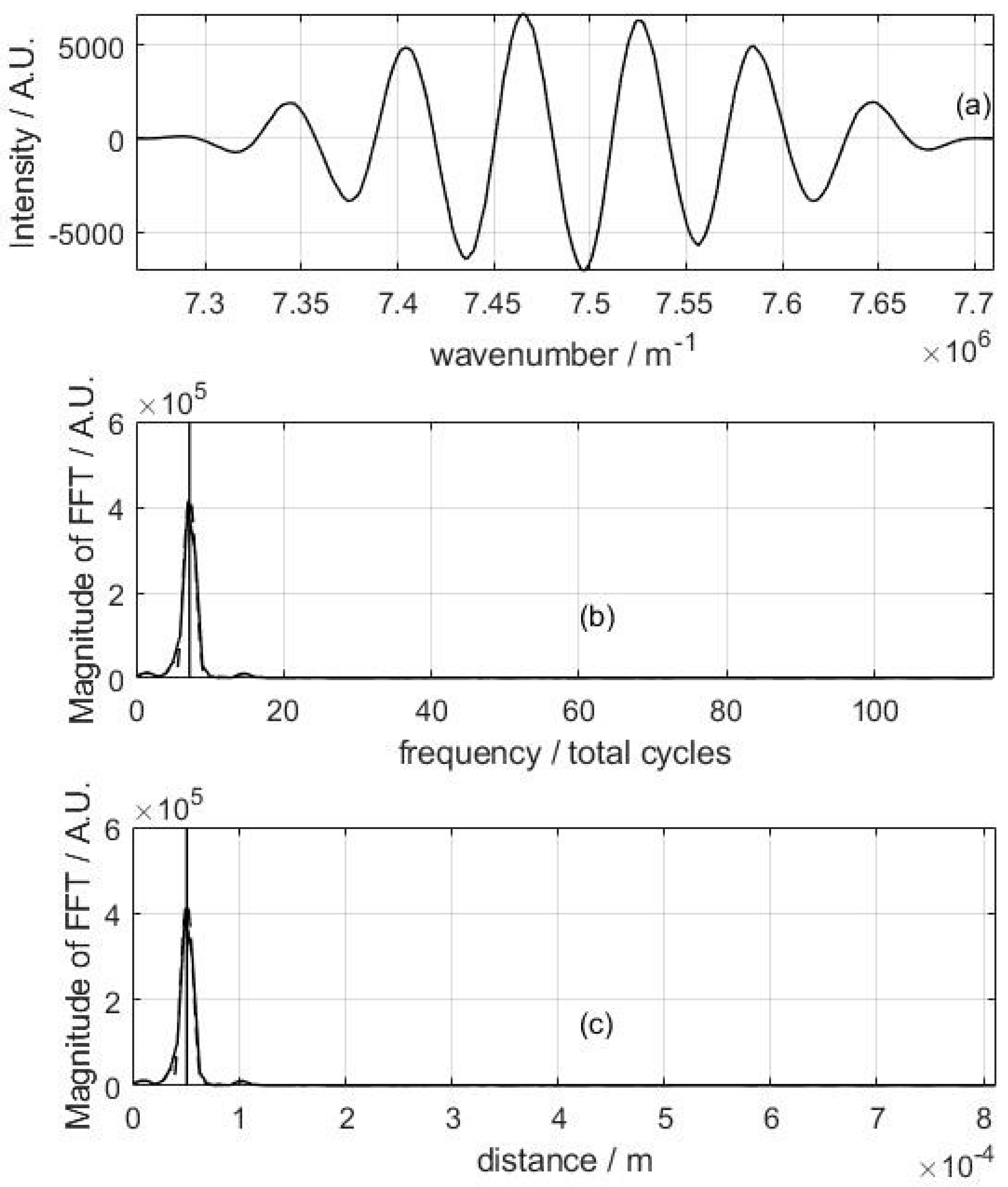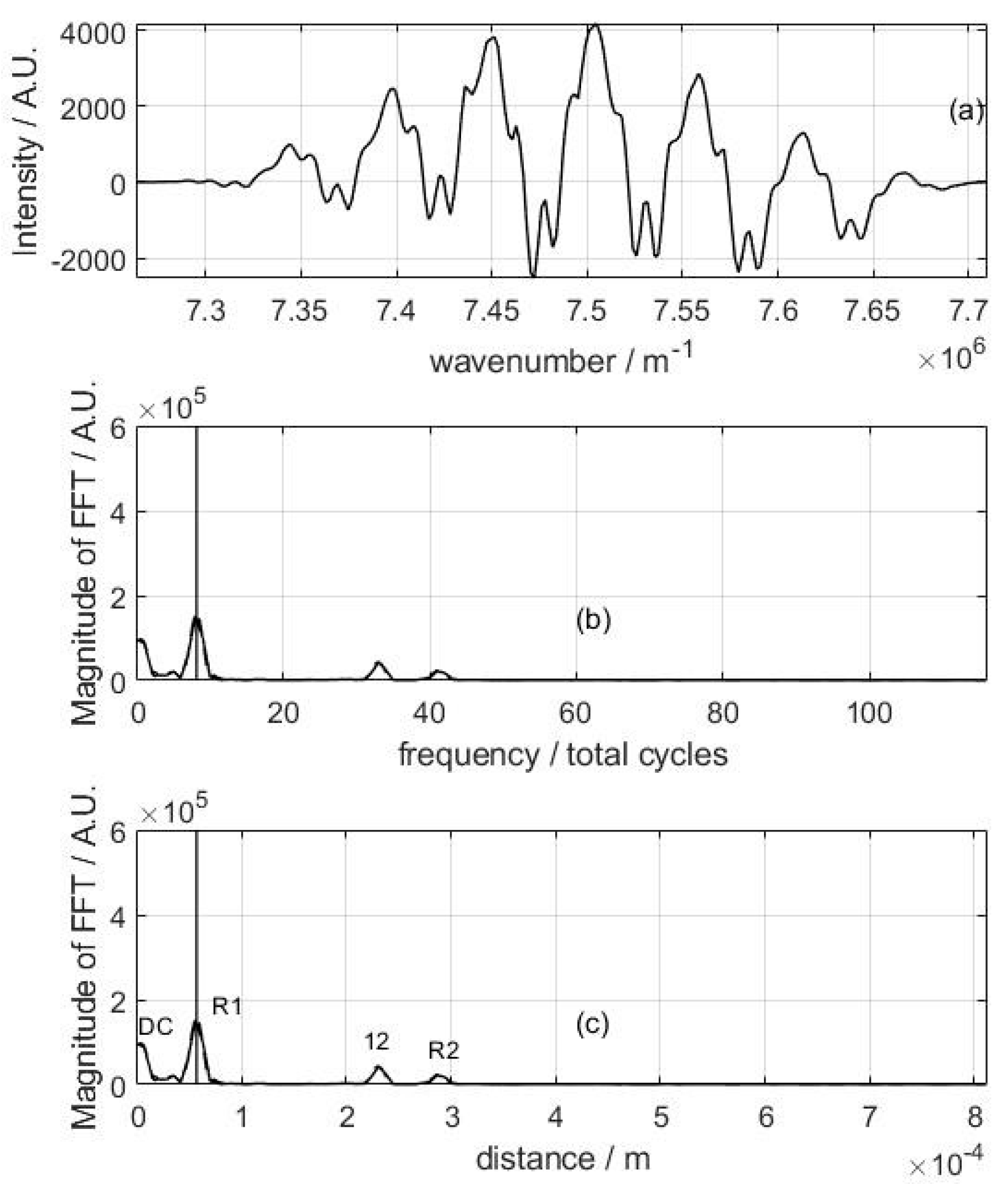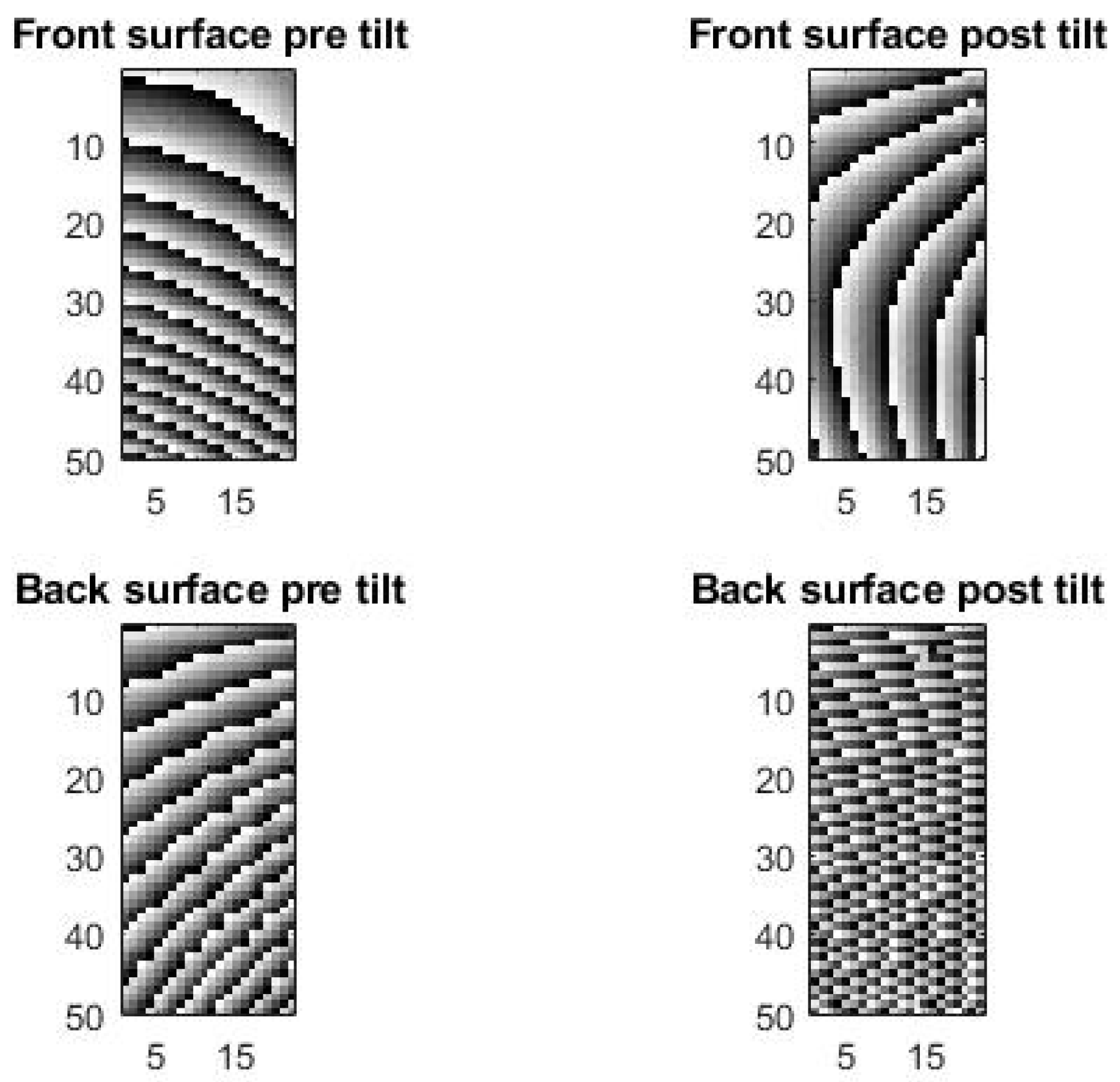Double-Shot 3-D Displacement Field Measurement Using Hyperspectral Interferometry †
Abstract
1. Introduction
2. Materials and Methods
3. Results
4. Discussion and Conclusions
Author Contributions
Acknowledgments
Conflicts of Interest
References
- Drexler, W.; Fujimoto, J.G. Optical Coherence Tomography; Springer: Berlin/Heidelberg, Germany, 2015. [Google Scholar]
- Huntley, J.M.; Widjanarko, T.; Ruiz, P.D. Hyperspectral interferometry for single-shot absolute measurement of two-dimensional optical path distributions. Meas. Sci. Technol. 2010, 21, 075304. [Google Scholar] [CrossRef][Green Version]
- Widjanarko, T.; Huntley, J.M.; Ruiz, P.D. Single-shot profilometry of rough surfaces using Hyperspectral Interferometry. Opt. Lett. 2012, 37, 350–352. [Google Scholar] [CrossRef] [PubMed]
- Ruiz, P.D.; Huntley, J.M. Single-shot areal profilometry using hyperspectral interferometry with a microlens array. Opt. Express 2017, 25, 8801–8815. [Google Scholar] [CrossRef] [PubMed]
- Bacon, R.; Adam, G.; Baranne, A.; Courtes, G.; Dubet, D.; Dubois, J.P.; Emsellem, E.; Ferruit, P.; Georgelin, Y.; Monnet, G.; et al. 3D spectrography at high spatial resolution. I. Concept and realization of the integral field spectrograph TIGER. Astron. Astrophys. Suppl. Ser. 1995, 113, 347–357. [Google Scholar]
- Ruiz, P.D.; Huntley, J.M.; Wildman, R.D. Depth-resolved whole-field displacement measurement using Wavelength Scanning Electronic Speckle Pattern Interferometry. Appl. Opt. 2005, 44, 3945–3953. [Google Scholar] [CrossRef] [PubMed]





Publisher’s Note: MDPI stays neutral with regard to jurisdictional claims in published maps and institutional affiliations. |
© 2018 by the authors. Licensee MDPI, Basel, Switzerland. This article is an open access article distributed under the terms and conditions of the Creative Commons Attribution (CC BY) license (https://creativecommons.org/licenses/by/4.0/).
Share and Cite
Reichold, T.V.; Ruiz, P.D.; Huntley, J.M. Double-Shot 3-D Displacement Field Measurement Using Hyperspectral Interferometry. Proceedings 2018, 2, 518. https://doi.org/10.3390/ICEM18-05406
Reichold TV, Ruiz PD, Huntley JM. Double-Shot 3-D Displacement Field Measurement Using Hyperspectral Interferometry. Proceedings. 2018; 2(8):518. https://doi.org/10.3390/ICEM18-05406
Chicago/Turabian StyleReichold, Tobias V., Pablo D. Ruiz, and Jonathan M. Huntley. 2018. "Double-Shot 3-D Displacement Field Measurement Using Hyperspectral Interferometry" Proceedings 2, no. 8: 518. https://doi.org/10.3390/ICEM18-05406
APA StyleReichold, T. V., Ruiz, P. D., & Huntley, J. M. (2018). Double-Shot 3-D Displacement Field Measurement Using Hyperspectral Interferometry. Proceedings, 2(8), 518. https://doi.org/10.3390/ICEM18-05406




